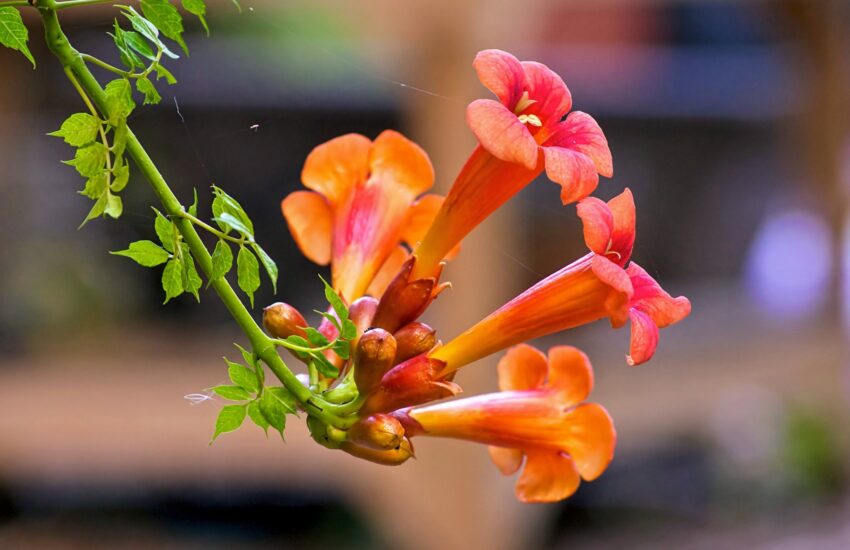A new study led by Virginia Tech suggests that monitoring the soundscape of an ecosystem – a composite of all its acoustic elements – could offer a new method to detect changes brought about by invasive non-native plants. Thus, rather than focusing solely on individual species, scientists should explore the holistic sounds of ecosystems.
The pioneering study was led by Grace O’Malley, a Ph.D. candidate in biological sciences, and Gabrielle Ripa, a Ph.D. student in plant and environmental sciences.
Underappreciated element of the natural world
“Soundscapes, or the acoustic patterns of a landscape through space and time, encompass both biological and physical processes. Yet, they are often an underappreciated element of the natural world and the ways in which it is perceived,” wrote the researchers.
“Scientists are only beginning to quantify changes to soundscapes, largely in response to anthropogenic sounds, but soundscape alteration is likely linked to many dimensions of global change.”
“For example, invasive non-native species are near-ubiquitous members of ecosystems globally and threaten both natural and managed ecosystems at great expense. Their impacts to soundscapes may be an important, yet largely unknown, threat to ecosystems and the human and economic systems they support.”
Comparing acoustic environments
To investigate the impact of invasive species on soundscapes, the team utilized small recording devices strategically placed across 66 locations near Virginia Tech’s campus to capture the environmental sounds at various times.
The goal was to compare the acoustic environments of areas overrun by invasive plants with those restored to their native conditions.
“We use these teeny recorders with an SD card that are specifically designed for recording wildlife acoustics,” Ripa explained. “The volume of data we collected was overwhelming.”
Invasive plants change the soundscape
The initial findings from a brief two-week pilot study were promising. “I was surprised that we were able to observe differences between the two habitats in such a short amount of time,” O’Malley said. “The invasive plants may actually be changing the soundscape.”
The study areas included Jefferson National Forest and several local parks where restoration efforts to remove invasive species like autumn olive are underway. This research not only contributes to ecological acoustic studies but also supports broader environmental research efforts.
“This is a call to other scientists that this is something that we think could be going on,” Ripa added. “We offer suggestions as to what we think could be reasons why invasive plants might be impacting soundscapes and some potential mechanisms that maybe we should be looking into.”
Studying the acoustic impact of invasive species
The concept of studying invasive species through their acoustic impact was initially proposed by Jacob Barney, a professor of invasive plant ecology. He, along with Meryl Mims, an associate professor who specializes in acoustic studies of bullfrogs, initiated this approach. Their collaboration has since expanded, incorporating art and multimedia through connections with David Franushich at the Institute for Creativity, Arts, and Technology.
“This project has been exciting, inspiring, and above all else, fun. Sound is an integral part of how we and other organisms experience and understand our surroundings. The study of the soundscape – and how we are changing it through the introduction of invasive species – is something people connect with,” Mims expressed.
“The formal research is important, but the opportunity to extend the research and ideas to a broader audience through our science-art collaboration has been very rewarding.”
A new understanding of ecosystem dynamics
Supported by a second grant from the Global Change Center in 2023, the research continues to evolve. The preliminary results have significant implications, pointing to a largely unexplored area of study that could reshape our understanding of ecosystem dynamics.
“No one’s asked this type of question in this type of system. It’s a completely novel area, and it’s not really being studied,” said Ripa.
Through this unique lens, the Virginia Tech team is pioneering a method that could potentially transform how we detect and understand the subtle yet profound changes invasive species impart on ecosystems – simply by listening.
The study is published in the journal Frontiers in Ecology and the Environment.
—–
Like what you read? Subscribe to our newsletter for engaging articles, exclusive content, and the latest updates.
Check us out on EarthSnap, a free app brought to you by Eric Ralls and Earth.com.
—–

